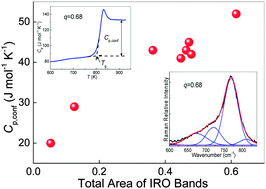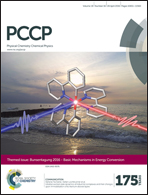A medium range order structural connection to the configurational heat capacity of borate–silicate mixed glasses
Abstract
It has been reported that the configurational heat capacity (Cp,conf) first increases and then becomes saturated with increasing B2O3/SiO2 ratio in borate–silicate mixed glasses. Through Raman spectroscopy measurements, we have, in this work, found an implication for the intermediate range order (IRO) structural connection to the composition dependence of the Cp,conf of borate–silicate mixed glasses. In the silica-rich compositions, the Cp,conf rapidly increases with increasing B2O3 content. This is attributed to the increase of the content of the B–O–Si network units ([B2Si2O8]2−) and 6-membered borate rings with 1 or 2 B4. In the boron-rich compositions, the Cp,conf is almost constant, independent of the increase in the B2O3/SiO2 ratio. This is likely attributed to the counteraction between the decrease of the fraction of two types of metaborate groups and the increase of the fraction of other borate superstructural units (particularly 6-membered borate rings). The overall results suggest that the glasses containing more types of superstructural units have a larger Cp,conf.


 Please wait while we load your content...
Please wait while we load your content...